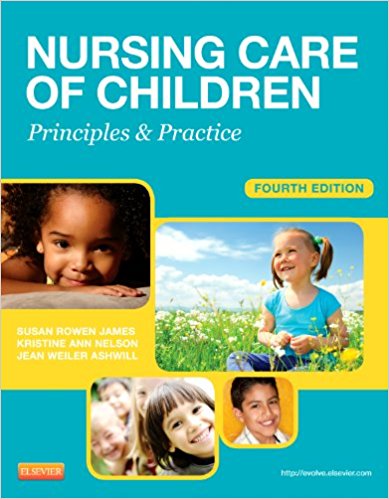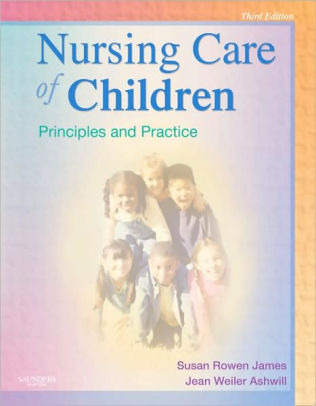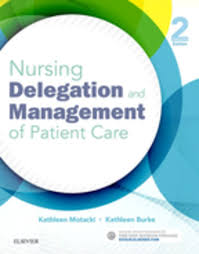Nursing Care Of Children Principles And Practice (James, Nursing Care of Children) 4th Edition By James -Test Bank
01: Introduction to Nursing Care of Children
Chapter 01: Introduction to Nursing Care of Children Test Bank
MULTIPLE CHOICE
1. A nurse is reviewing changes in healthcare delivery and funding for pediatric populations. Which current trend in the pediatric setting should the nurse expect to find?
- 39. Increased hospitalization of children
- 40. Decreased number of uninsured children
- 41. An increase in ambulatory care
- 42. Decreased use of managed care
ANS: C
One effect of managed care is that pediatric healthcare delivery has shifted dramatically from the acute care setting to the ambulatory setting. The number of hospital beds being used has decreased as more care is provided in outpatient and home settings. The number of uninsured children in the United States continues to grow. One of the biggest changes in healthcare has been the growth of managed care.
DIF: Cognitive Level: Comprehension REF: p. 3
OBJ: Nursing Process Step: Planning MSC: Safe and Effective Care Environment
A nurse is referring a low-income family with three children under the age of 5 years to a program that assists with supplemental food supplies. Which program should the nurse refer this
family to?
Medicaid
Medicare
Early and Periodic Screening, Diagnostic, and Treatment (EPSDT) program
Women, Infants, and Children (WIC) program
ANS: D
WIC is a federal program that provides supplemental food supplies to low-income women who are pregnant or breastfeeding and to their children until the age of 5 years. Medicaid and the Medicaid Early and Periodic Screening, Diagnostic, and Treatment (EPSDT) program provide for well-child examinations and related treatment of medical problems. Children in the WIC program are often referred for immunizations, but that is not the primary focus of the program. Public Law 99-457 provides financial incentives to states to establish comprehensive early
intervention services for infants and toddlers with, or at risk for, developmental disabilities.
Medicare is the program for Senior Citizens.
DIF: Cognitive Level: Application REF: p. 7
OBJ: Nursing Process Step: Implementation
MSC: Health Promotion and Maintenance
3. In most states, adolescents who are not emancipated minors must have parental permission before:
treatment for drug abuse.
treatment for sexually transmitted diseases (STDs).
obtaining birth control.
surgery.
ANS: D
An emancipated minor is a minor child who has the legal competence of an adult. Legal counsel may be consulted to verify the status of the emancipated minor for consent purposes. Most states allow minors to obtain treatment for drug or alcohol abuse and STDs and allow access to birth control without parental consent.
DIF: Cognitive Level: Application REF: p. 12
OBJ: Nursing Process Step: Planning MSC: Safe and Effective Care Environment
4. A nurse is completing a clinical pathway for a child admitted to the hospital with pneumonia. Which characteristic of a clinical pathway is correct?
Developed and implemented by nurses
Used primarily in the pediatric setting
Specific timelines for sequencing interventions
One of the steps in the nursing process
ANS: C
Clinical pathways measure outcomes of client care and are developed by multiple healthcare professionals. Each pathway outlines specific timelines for sequencing interventions and reflects interdisciplinary interventions. Clinical pathways are used in multiple settings and for clients throughout the life span. The steps of the nursing process are assessment, diagnosis, planning, implementation, and evaluation.
DIF: Cognitive Level: Comprehension REF: p. 6
OBJ: Nursing Process Step: Planning MSC: Safe and Effective Care Environment
5. When planning a parenting class, the nurse should explain that the leading cause of death in children 1 to 4 years of age in the United States is:
- 1. premature birth.
- 2. congenital anomalies.
- 3. accidental death.
- 4. respiratory tract illness.
ANS: C
Accidents are the leading cause of death in children ages 1 to 19 years. Disorders of short gestation and unspecified low birth weight make up one of the leading causes of death in neonates. One of the leading causes of infant death after the first month of life is congenital anomalies. Respiratory tract illnesses are a major cause of morbidity in children. DIF: Cognitive Level: Application REF: p. 9
OBJ: Nursing Process Step: Implementation
MSC: Safe and Effective Care Environment
6. Which statement is true regarding the “quality assurance” or “incident” report?
The report assures the legal department that there is no problem.
Reports are a permanent part of the client’s chart.
The nurse’s notes should contain the following: “Incident report filed and copy placed in chart.”
This report is a form of documentation of an event that may result in legal action.
ANS: D
An incident report is a warning to the legal department to be prepared for potential legal action; it is not a part of the client’s chart or nurse documentation. DIF: Cognitive Level: Knowledge REF: p. 14
OBJ: Nursing Process Step: Implementation
MSC: Safe and Effective Care Environment
7. Which client situation fails to meet the first requirement of informed consent?
The parent does not understand the physician’s explanations.
The physician gives the parent only a partial list of possible side effects and complications.
No parent is available and the physician asks the adolescent to sign the consent form.
The infant’s teenage mother signs a consent form because her parent tells her to.
ANS: C
The first requirement of informed consent is that the person giving consent must be competent. Minors are not allowed to give consent. An understanding of information, full disclosure, and
voluntary consent are requirement of informed consent, but none of these is the first requirement.
DIF: Cognitive Level: Comprehension REF: p. 12
OBJ: Nursing Process Step: Implementation
MSC: Safe and Effective Care Environment
8. A nurse assigned to a child does not know how to perform a treatment that has been prescribed for the child. What should the nurse’s first action be?
Delay the treatment until another nurse can do it.
Make the child’s parents aware of the situation.
Inform the nursing supervisor of the problem.
Arrange to have the child transferred to another unit.
ANS: C
If a nurse is not competent to perform a particular nursing task, the nurse must immediately communicate this fact to the nursing supervisor or physician. The nurse could endanger the child by delaying the intervention until another nurse is available. Telling the child’s parents would most likely increase their anxiety and will not resolve the difficulty. Transfer to another unit delays needed treatment and would create unnecessary disruption for the child and family. DIF: Cognitive Level: Application REF: p. 11
OBJ: Nursing Process Step: Implementation
MSC: Safe and Effective Care Environment
9. A nurse is completing a care plan for a child and is finishing the assessment phase. Which activity is not part of a nursing assessment?
Writing nursing diagnoses
Reviewing diagnostic reports
Collecting data
Setting priorities
ANS: D
Setting priorities is a part of planning. Writing nursing diagnoses, reviewing diagnostic reports, and collecting data are parts of the assessment.
DIF: Cognitive Level: Comprehension REF: p. 19
OBJ: Nursing Process Step: Planning MSC: Physiological Integrity














Reviews
There are no reviews yet.